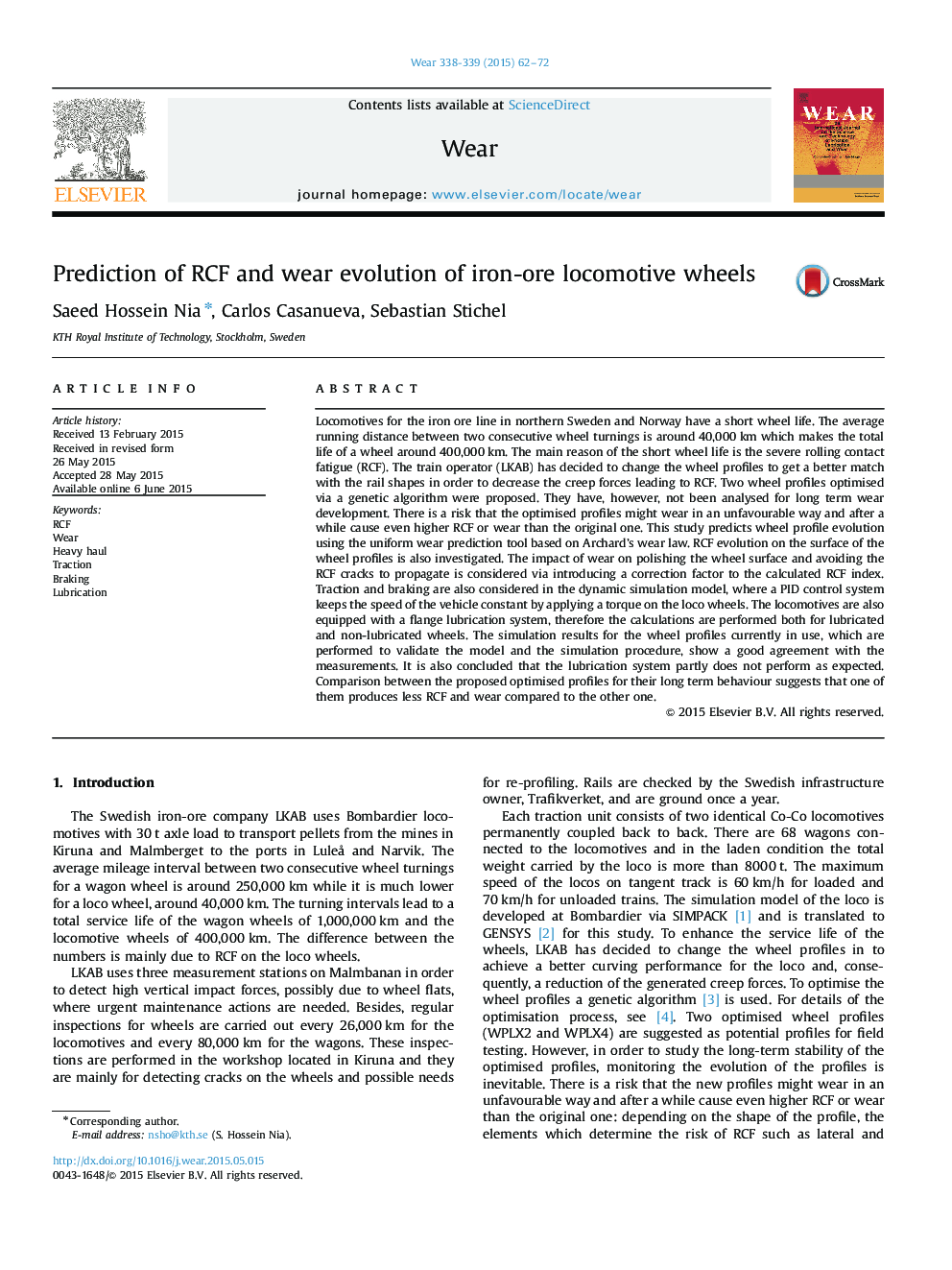| کد مقاله | کد نشریه | سال انتشار | مقاله انگلیسی | نسخه تمام متن |
|---|---|---|---|---|
| 7004156 | 1454972 | 2015 | 11 صفحه PDF | دانلود رایگان |
عنوان انگلیسی مقاله ISI
Prediction of RCF and wear evolution of iron-ore locomotive wheels
دانلود مقاله + سفارش ترجمه
دانلود مقاله ISI انگلیسی
رایگان برای ایرانیان
موضوعات مرتبط
مهندسی و علوم پایه
مهندسی شیمی
شیمی کلوئیدی و سطحی
پیش نمایش صفحه اول مقاله

چکیده انگلیسی
Locomotives for the iron ore line in northern Sweden and Norway have a short wheel life. The average running distance between two consecutive wheel turnings is around 40,000Â km which makes the total life of a wheel around 400,000Â km. The main reason of the short wheel life is the severe rolling contact fatigue (RCF). The train operator (LKAB) has decided to change the wheel profiles to get a better match with the rail shapes in order to decrease the creep forces leading to RCF. Two wheel profiles optimised via a genetic algorithm were proposed. They have, however, not been analysed for long term wear development. There is a risk that the optimised profiles might wear in an unfavourable way and after a while cause even higher RCF or wear than the original one. This study predicts wheel profile evolution using the uniform wear prediction tool based on Archard's wear law. RCF evolution on the surface of the wheel profiles is also investigated. The impact of wear on polishing the wheel surface and avoiding the RCF cracks to propagate is considered via introducing a correction factor to the calculated RCF index. Traction and braking are also considered in the dynamic simulation model, where a PID control system keeps the speed of the vehicle constant by applying a torque on the loco wheels. The locomotives are also equipped with a flange lubrication system, therefore the calculations are performed both for lubricated and non-lubricated wheels. The simulation results for the wheel profiles currently in use, which are performed to validate the model and the simulation procedure, show a good agreement with the measurements. It is also concluded that the lubrication system partly does not perform as expected. Comparison between the proposed optimised profiles for their long term behaviour suggests that one of them produces less RCF and wear compared to the other one.
ناشر
Database: Elsevier - ScienceDirect (ساینس دایرکت)
Journal: Wear - Volumes 338â339, 15 September 2015, Pages 62-72
Journal: Wear - Volumes 338â339, 15 September 2015, Pages 62-72
نویسندگان
Saeed Hossein Nia, Carlos Casanueva, Sebastian Stichel,